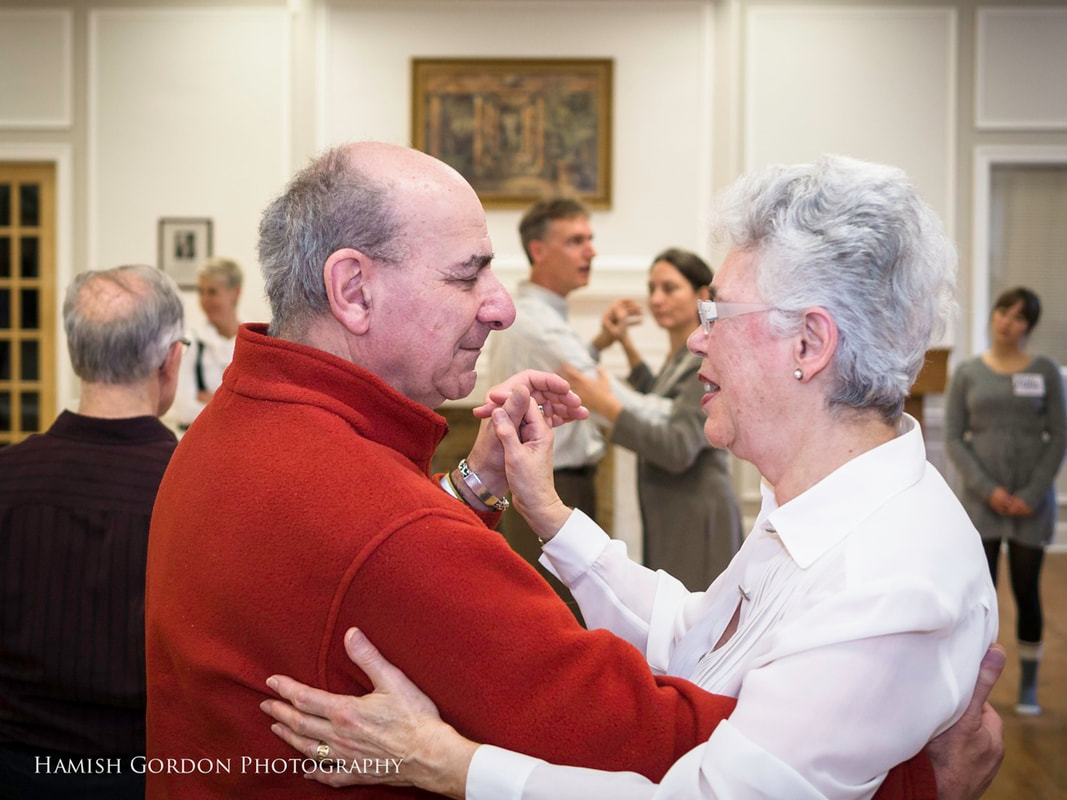 " I've always wanted to dance the tango, but never did. I visited Argentina, its tango bars and night clubs, but never tried. The tango overwhelmed me with its intensity: the dominant leader, the submissive follower, the ability to balance on one foot. Then I watched Al Pacino dance the tango in "Scent of a Woman". He is blind, his partner inexperienced. He offers her the opportunity to dance her first tango; she offers him the pleasure of leading a beautiful young woman in this most seductive dance.. Initially, the young woman hesitates, afraid of making a mistake. Reassured by Pacino that the tango is not a metaphor for life—that if you make a mistake and get all tangled up, you can "untango" yourself—she accepts the challenge and dances her first tango over afternoon tea at the Plaza Hotel. I too have decided to accept the challenge. After ten years of living with Parkinson's, the kind that leaves you stiff and immobile, I will dance the tango, along with others experiencing neurological challenges, no longer afraid of making mistakes. If I get tangled, I can untangle. I will dance the tango and drink afternoon tea in the Bethune Ballroom, not the Plaza, but it will be just as meaningful, if not more so." Carole Hartzman It has been known for many years that many forms of dance and movement (including simply walking) have significant health benefits. Over the last ten years, researchers have discovered that Argentine tango is particularly beneficial in many ways. Studies have shown improvements in areas ranging from balance, gait and posture to mood and social engagement.
Several features of the tango are thought to contribute to its therapeutic effects. For a start, the embrace offers a gentle, flexible touch (as opposed to a rigid, stylized frame) which is in itself beneficial. It allows partners to support each other gently while they gain confidence in stepping—especially backwards, which is often challenging for seniors and those with any neuromotor difficulties. The non-verbal communication through the embrace may be especially valuable. The fact that tango is based on walking makes it accessible to many who find other dance forms too challenging. The tango walk itself helps develop balance and a regular gait, while learning short combinations or figures is excellent for memory. The pivot, the second basic element of tango, is another valuable exercise for anyone with challenges in balance and turning. Last but not least, tango music is highly expressive, with a wide variety of moods and feelings which can be shared by the partners through the embrace and movement. All these reasons and more make tango good for you—come join us and explore for yourself! We are delighted to announce the introduction of Tea & Tango, a series of new programs exploring the benefits of Argentine tango for seniors and people with health challenges. Our first program, which we are developing in collaboration with Happily Ever Active and its co-founder, Jesse Robson, is designed for ambulatory people with neurological conditions such as Parkinson’s disease, stroke, brain injury, MS and others. It will be offered on Saturdays throughout the fall of 2013 in the Bethune Ballroom of the VG Hospital. Participants may bring a partner, who may be a friend, spouse, relative; or dance with one of the volunteers we are recruiting for this program. Volunteers can be novice or experienced dancers, with or without tango experience. We are also planning to offer an exploration of Argentine Tango for wheelchair users based on Tango al Reves - shadow position. This program will be informed by the 10 week program in fall and held In January 2014. More information to come later in fall. Please contact us if you are interested in this program. Semi-Super Heroes program at Spencer House Community Centre Tango classes for “current and future seniors”! Details to be announced in early September. Stay tuned. |
You, Two, Can Tango! © 2023 All Rights Reserved.
AuthorMartina & Lorne Archives
April 2015
Categories |



 RSS Feed
RSS Feed